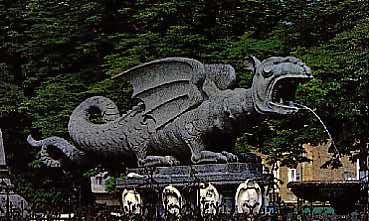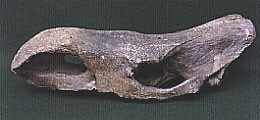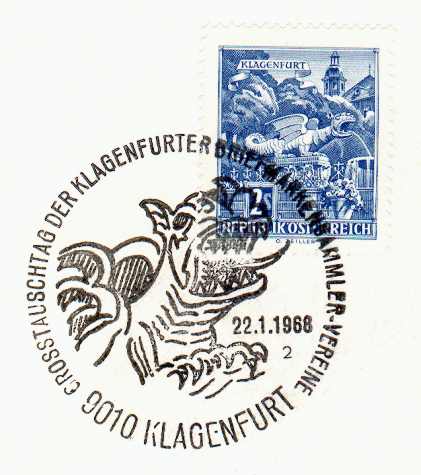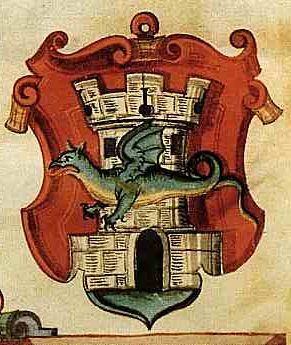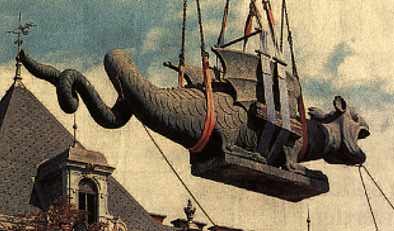 | |||||||||||
Der Klagenfurter Lindwurm
However, the legend of a dragon haunting the surroundings of Klagenfurt is much older. The name of the town can be read as "ford of lament". Floods repeatedly destroyed the crossings over the river Glan and many persons lost their lives. Thus the idea arose, that a water dragon was responsible for all the letal accidents at the ford and in the swamps near the river Glan. There he hided in eternal mists. During rain and thunderstorm people could hear him roar. To relieve the peasants from this creature, the Duke of Carinthia built a huge, strong tower at the limits of the swamps. Fearless knights hided there, and a stout bull tied to a chain with barbs was presented as a bait. Soon the winged Lindwurm appeared and devoured the bull - and hung wriggling on the chain like a fish on the hook. At once he was slain by the knights. Later the swamps were drained, and the tower was replaced by a castle. Thus the town Klagenfurt was founded. The city-arms still show tower and dragon to remind us of this heroic deed. The oldest settlements of Klagenfurt were actually located north of the present town on top of a small hill which was secure from inundation. There the river could be crossed by a ford. To the south the country was marshy and unsafe. That area was not inhabited before the first half of the 13th century. The oldest document preserved about the Lindwurm - a city seal dated 1287 - originates from that period. At that time the defeat of the dragon was allready common folk lore. The finding of an approximately 75 cm long skull of a totally unknown beast enhanced this belief. However, its proveniance and the date of the discovery remain obscure. Some state that it was found in 1353 in a gravel pit still known as Lindwurmgrube, others report that it originates from the Goritschitzen, which is the southern flank of the hill of ancient Klagenfurt, and some say that it was not unearthed before the middle of the 16th century. The "dragons skull" was carefully preserved at the town hall until in 1840 the palaeontologist Franz UNGER determined it as the cranium of the wooly rhinoceros [Rhinoceros tichorhinus CUVIER = Coelodonta antiquitatis (BLUMENBACH)]. Nine years later the Naturhistorisches Landesmuseum was founded and the rhino-skull became one of its first exhibits.
Ein Lindwurm gantz ungeheuer From September 1996 to July 1997 the Lindwurm was removed for restoration.
Sources
© MCMXCVI by J. Georg Friebe |
